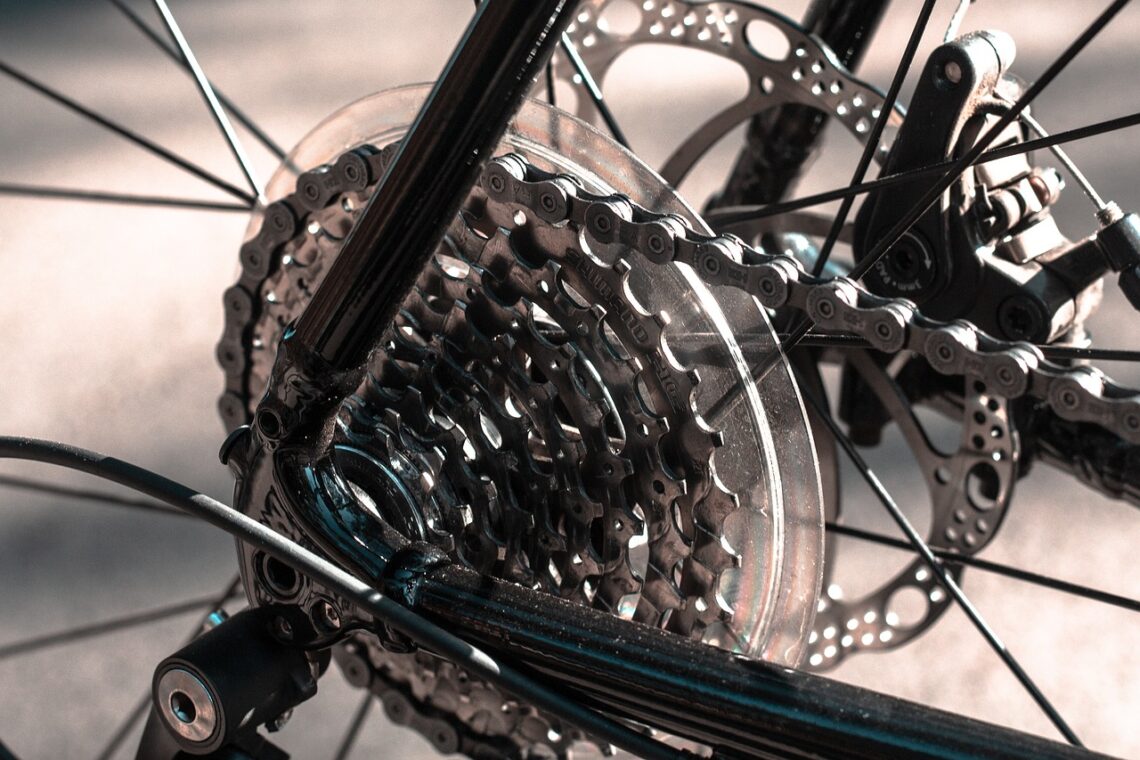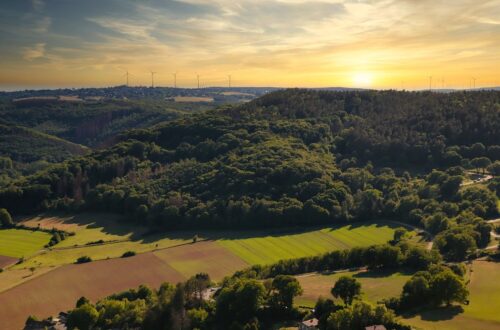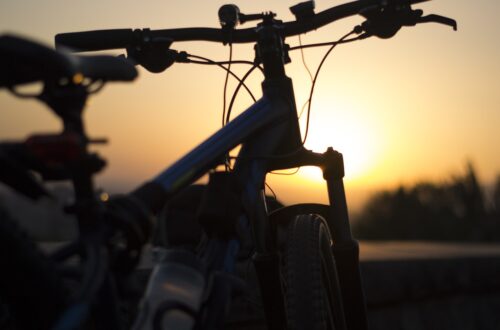
Do Mountain Bikes Have Gears?
Mountain bikes might be quite slow on pavement, but are very fast off-road. If you are new to mountain biking, you might wonder how pedaling power is transferred to the rear wheel. In this article, we’ll have a closer look at the drivetrain of a mountain bike. Do mountain bikes have gears?
All mountain bikes nowadays are equipped with gears. Being able to switch to a lower or higher gear, makes it easier for the rider to climb a steep slope or to travel at a high speed. Mountain bikes without gears (single-speed) do exist, but are unusual and require great strength.
The drivetrain of a mountain bike has gone through quite some changes over the last few years. Have these changes actually improved the mountain biking experience? We’ll discuss it in this article.
Do Mountain Bikes Have Gears?
Nowadays, virtually all mountain bikes are equipped with gears. Having gears make mountain bikes versatile because riders are able to select the right gear for the trail. With no gears (or only one), you wouldn’t be able to put enough power down to make it to the top of a steep incline. On the other hand, your feet would soon be spinning in the air if you would want to ride fast on a flat surface or descent.
This has all to do with the term’cadence’. Cadence is nothing more than a fancy word used in cycling for the rotations per minute of your crank. Every cyclist has a different cadence at which he or she feels most comfortable. But the average cadence of a professional cyclist lies between 80-100 RPM.
This is where the use of gears comes into place. By selecting the right gear for the conditions, you will be able to pedal at your preferred cadence and you won’t tire out your muscles as quickly. Typically, you switch to a lower gear when accelerating or climbing a slope, while you use a higher gear to maintain a high speed or to pedal during a descent.
The drivetrain of a mountain bike consists of a chainring, cassette with sprockets, derailleur and a chain to connect it all. You operate the drivetrain by pressing the levers on the handlebars. The bigger sprockets on the cassette are your ‘low’ gears; the smaller ones are your ‘high’ gears.
It is worth mentioning that there are actually mountain bikes without gears still around. But the so called ‘single-speed mountain bikes’ aren’t very common and unfit for amateurs. The lack of gears makes them light and cheap, but they are also less versatile and require great muscle strength.
How Many Gears Do Mountain Bikes Have?
Mountain bikes used to have a lot of gears. 21, 24, 27 or even 30 gears wasn’t uncommon. But times have changed and nowadays mountain bikes come with 10, 11 or 12 gears.
Having 21 gears doesn’t implicate that your bike actually has the equal amount of sprockets. The term ’21-speed’ comes from the multiplication of the number of front chainrings with the number of cogs on the cassette. A ’21-speed’ bike has 3 chainrings in front and 7 cogs on the cassette.

The complexity of the system is big downside. The added component like the derailleur, chainrings and shifter, increase the likelihood of defects. A chain dropping off or jamming the whole system, isn’t uncommon and makes this type of drivetrain less reliable.
As time went on, manufacturers discovered that the gear-ratio is more important than the number of gears. For this reason, the drivetrain of a modern day mountain bike consists of a ‘1x’ setup: one chainring in front and a wide range cassette with 10-12 sprockets in the rear.
How To Shift Gears On A Mountain Bike
When you are riding a mountain bike for the very first time, changing gears can take some time to get used to. The procedure of shifting gears on a bike with a derailleur, is different from shifting on a bike with hub gears.
Shifting Gears With A Single Front Chainring
On a mountain bike with a 1x-setup, you’ll find a control unit with two levers (or paddles) on the right hand side of your handlebars.
By pressing the small shift paddle, you release tension on the shift cable, which will make the chain move to a smaller cog. This gear is higher than the previous one, and will lower you cadence when travelling at the same speed. Accelerating in this gear is a bit harder.
The large shift paddle is harder to push because you now put tension on the shift cable. This will make the chain move to a larger cog and thus a lower gear. It will increase your cadence which will make it easier to accelerate of climb.
To extend the lifespan of your drivetrain components, it is advised to not shift under full load. Best way to achieve this, is to look ahead and anticipate on what’s coming. Do you see a steep incline ahead? Shift to a lower gear (larger cog) early. If that incline took you by surprise, you should turn around and give yourself some ground to switch to the right gear.
It’s worth mentioning that shifting gears under full load can seriously damage you drivetrain. Doing so and the drivetrain will greet you with some horrible noises. There a big chance of snapping a tooth off one of the cogs on your cassette.
Although mountain bikes nowadays have less gears, replacing one of the components hasn’t become cheaper! More about the costs involved with mountain biking in my article: The Disadvantages Of Mountain Biking.
Shifting Gears On A Bike With A Front Derailleur
A bike with a front and rear derailleur has an extra control unit on the left hand side of the handlebars. The shifting procedure is the same as with a 1x-setup, but you now have more gears to choose from.
By pressing the big paddle on the left-side control unit, you put tension on the shift cable of the front derailleur. This will make the chain move to a larger chainring (and thus higher gear). The impact of this gear change is very noticeable and your cadence will drop significantly.
When trying to find the right gear-ratio for the circumstances, you should definitely avoid cross-chaining. It is a phenomenon that’s often linked to having a front derailleur. Cross-chaining happens when you shift to the smallest chainring and smallest sprocket, which makes the chain sit diagonally. This puts a lot of strain on your drivetrain components and causes excessive wear.
For a bike with a front derailleur, the same warning applies as for a bike without one: never shift gears under full load. Also don’t use your front and rear derailleur simultaneously.
Shifting Electronically
Electronic shifting is a fairly recent invention within the world of cycling. The concept is actually a few decades old, but it took some time before it made its appearance on mass produced bicycles.
The principle of shifting gears actually remains the same. There’s still the derailleur, chain, chainring and cassette, but there’s an absence of a shifting cable. The cable has been replaced by a motor and battery on the derailleur and a wireless signal from the control unit.
The procedure of shifting gears also remains the same, other than that there’s no mechanical feel from the paddles.
Frequently Asked Questions
Mountain bikes nowadays have less gears than in the past, because you don’t actually need to have that many gears. Having less components in the drivetrain makes the system more reliable and easier to maintain.
Downhill mountain bikes are equipped with gears, but have less gears than a regular mountain bike (7-speed). Riders need gears to be able to accelerate out of corners or to maintain speed on flat sections.
All mountain bikes nowadays are equipped with gears. Bikes without gears (single-speed) do exist, but are uncommon. Having gears makes it easier for the rider to overcome obstacles like a steep slope, or to achieve high speeds.





